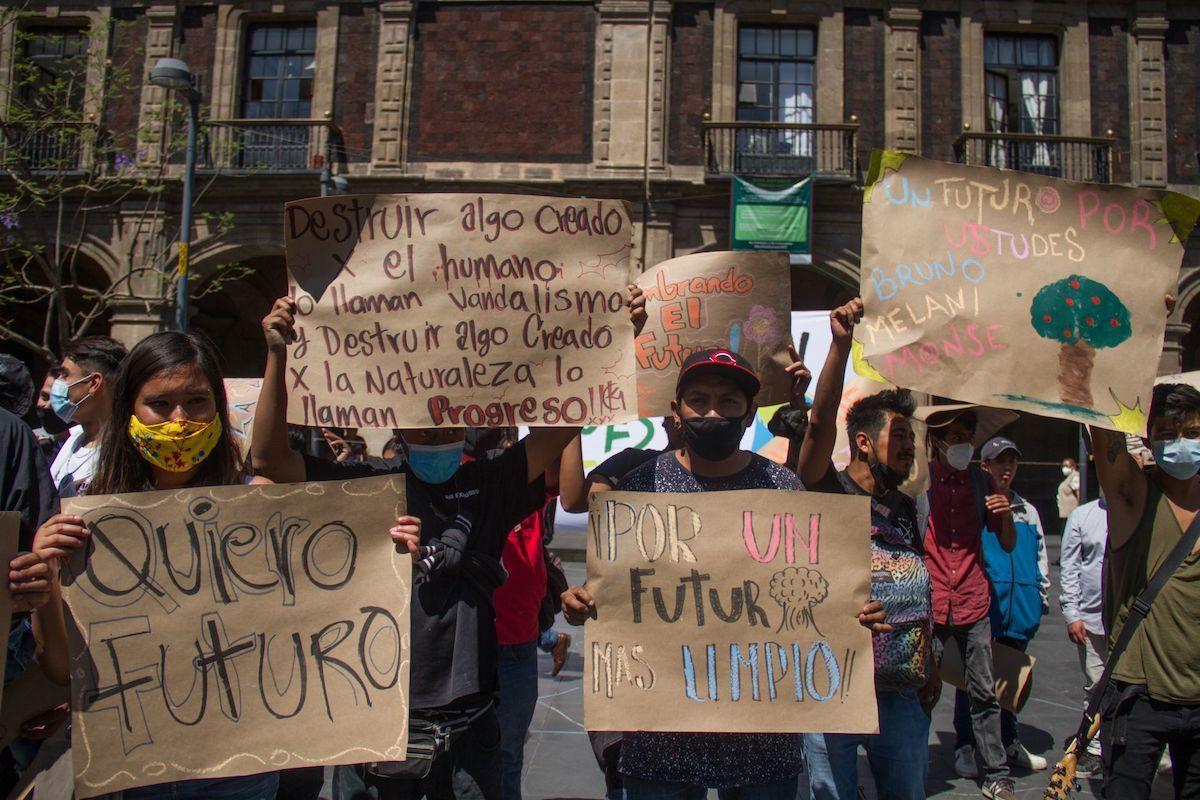Mexico's budget is misaligned with the country's climate goals. The coalition of civil organizations Resilient Mexico warned of the urgent need to identify which government programs generate the most greenhouse gas emissions so that the country's spending can combat global warming and not aggravate it.
Director Sandra Guzmán, director of the Latin American and Caribbean Climate Finance Group (GFLAC), said that such identification would make it possible to harmonize programs with the agenda to combat climate change, whose work must start from the conception of the programs and not at the end when they are already started.
“If every year we did an analysis of how the programs are aligned or not and that led us to design the budget, we would make a lot of changes that don't have to be radical, but gradual,” said the founder of GFLAC.
Currently, the country's budget is more oriented to those activities that produce greenhouse gases than to those that combat global warming.
According to the Sustainable Finance Index, 0.47% of the country's total budget goes to the attention of climate change, while in those areas aimed at oil production and other components that cause climate change, this budgetary percentage rises to 8.98%.
In this regard, the request for Climate Resilience is to have a funding strategy, Guzmán said in the framework of the press conference “Mexico's climate contributions and the 2026 Economic Package: challenges and opportunities to align the budget and the climate.”
“And that issue is going to be an ever greater conditionality. Donors are no longer going to give you money for giving it to you. They'll tell you what you're going to use it for. And if Mexico doesn't have a plan, then we're back to the same point. You're going to spend it on things that aren't going to transform and it's going to be a waste of money and it's going to be a vicious circle,” said the expert.
Budget reflects neglect of the environment
Cross-sectional Annex 16 is a section of the Federal Expenditure Budget (PPEF) that allocates resources to address climate change, however, experts expressed doubts that this item fully meets the proposed object.
For 2026, transverse annex 16 maintains a budget of 212 billion pesos that is distributed in different areas of the PPEF and reflected in this annex, which groups these expenses together in order to show what it intends to address climate change.
“This represents 2.09% of the total net spending we will have for the next fiscal year. One thing that needs to be emphasized in this presentation is that cross-sectional annex 16 has been transformed into a budget to finance megaprojects,” said Gina Chacón, director of Public Policy and the Mexico Program of the Wildlands Network organization.
An analysis carried out by the coalition of civil organizations Noroeste Civil Society for Environmental Sustainability (Nossa) specified that less than 0.2% of this Transverse 16 is allocated to protected natural areas. This means that, if there are no modifications, these areas will have 10.2 pesos per hectare.
With 1.2 million pesos, the National Commission for Protected Natural Areas (Conanp) is on track to have the lowest budget in the last 21 years, according to the PPEF. In detail, functions such as the conservation and management of protected natural areas are being curtailed.
“You can see that in 2021 it had an allocation of 540 million pesos and by 2025 this money plummeted to only 93 million pesos. Why do I stress it? Because precisely this year, the development of programs for adaptation to climate change began in protected natural areas. The constant and systematic reduction of the public budget for areas is simply leaving them unprotected and abandoned,” said Chacón.
Inequality and priorities
Jorge Martínez, coordinator of the Climate Justice Program of the Oxfam Mexico organization, emphasized that Mexico's commitment continues to focus on fossil fuels, which is reflected in Plan Mexico, a series of actions that encompass the development objectives of Claudia Sheinbaum's presidency.
“We continue to invest in combustion in internal combustion plants when the rest of the world is already transitioning (to clean energy); 94% of the new capacity installed to generate electricity last year was through renewables in the rest of the world,” Martínez said.

Energy tenders prioritize combined cycle. Photo: Juan Luis Garcia.
The federal government intends to add 22,674 MW to public generation capacity by 2030, including seven tenders this year equivalent to almost 60 billion pesos in investment, of which only the photovoltaic plant in Puerto Peñasco is of the renewable order.
The investment contrasts with that of electrifying 100% of the country, which contemplates 19 billion pesos. Martínez noted that the richest 10% of households in the country receive a significant amount of electricity subsidies that is comparable to the total amount that the government plans to spend on electrification over a six-year period.
“It's not that there isn't money, it's that we're focusing on subsidizing electricity for the rich and subsidizing transportation for the rich,” Martinez said.




Comentarios (0)